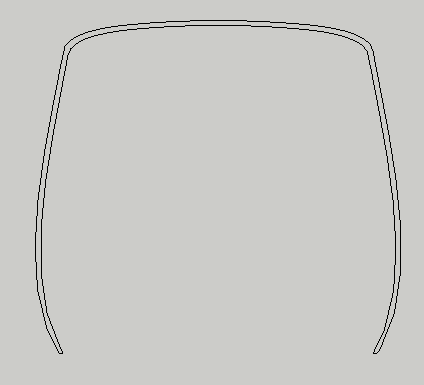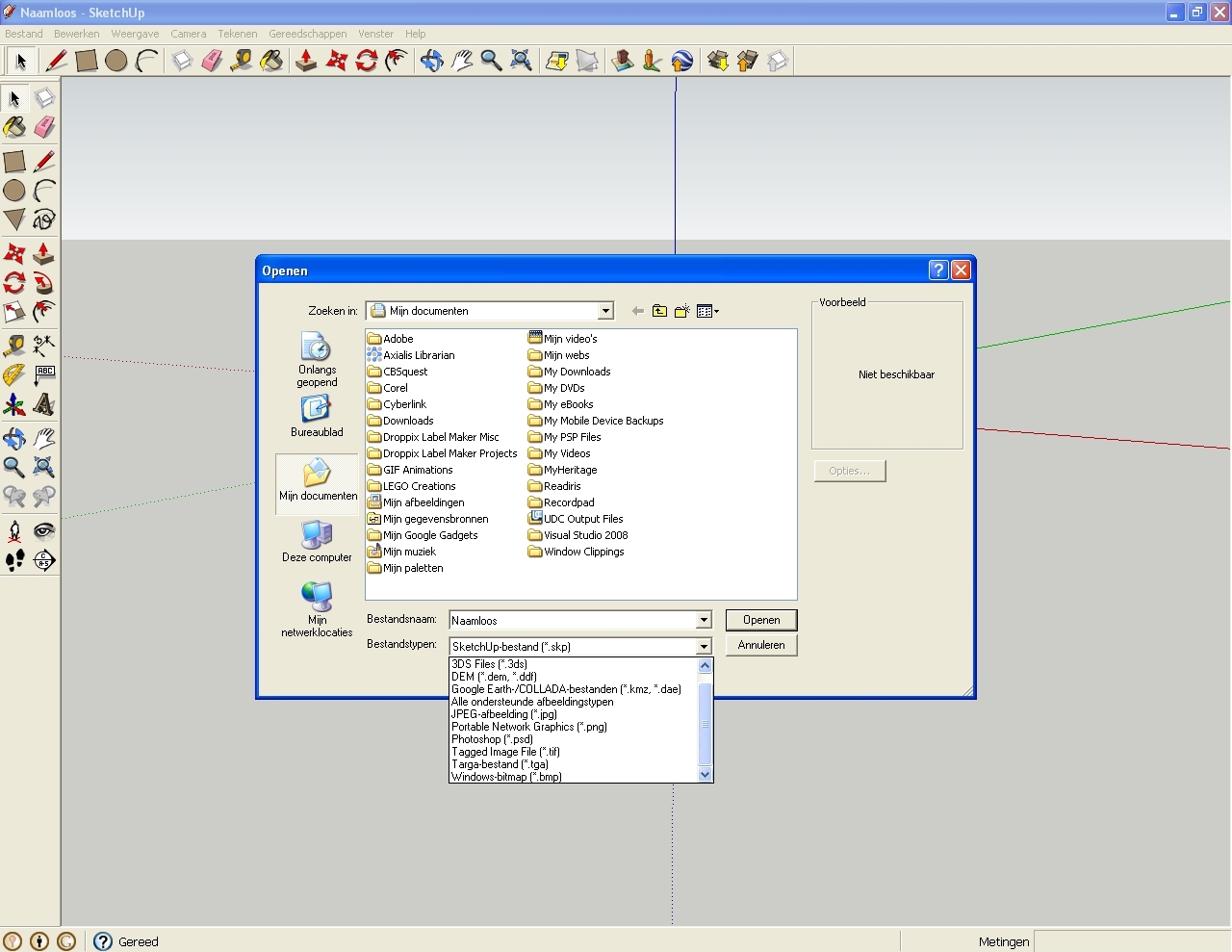[Plugin] Dxf_In v2.2 20110517 Dxf2Skp
-
mysterd429, You wrote "Dxf_in_v2.d.rb". Is that a typo? Is my understanding that Dxf_In v2.2 (the latest update found here) crashes your system, and v2.0 (the version found at http://modelisation.nancy.archi.fr/rld/....) results in a error message, correct? I do not have access to a Mac, and your help is required to identify the problem.
The only differences between v2.0, and v2.2 are some error messages. First that Dxf_In is for ASCII Dxf files only (Dxf_In can not read Binary Dxf files), and second that the Drive\Path\FileName.dxf must be standard ASCII characters (SketchUp Ruby will not read non-standard ASCII characters). I do not know how these error messages could cause SketchUp to crash, but if v2.0 runs without crashing, and v2.2 doesn't, I suspect the problem is with attempting to translate a binary file on the Mac.
For now, can you open SketchUp with Dxf_In v2.0 installed, then from SketchUp open the Ruby Console (Window > Ruby Console), then attempt to import the problem Dxf file. If you get a error message in the Ruby Console, please copy, and upload the error message here.
Thanks, hdt
-
Hi, hdt. Yes, the 2.d was a typo. It was supposed to be 2.2.
Using 2.0, I don't get anything in the Ruby console. I do get two progress bars across the bottom of the model window after choosing the DXF file, one after the other. The first is marked "Stage 1 [ 1 ]" and the second is marked "Stage 2 [ 1/1 ]".
So if there's anything you'd like me to try, let me know. I write software for a living, though I've never used Ruby.
Thanks!
-
mysterd429, Can you upload your Dxf file, here or pm it to me? If not, see if you can import the attached Dxf file of a box.Box00.dxf
-
I was unable to import Box00.dxf; I got the <Error> or empty file again. There was nothing in the Ruby console. The DXF file is from Illustrator; I've sent it to you by PM.
-
mysterd429, Thanks for the file. It contains one entity, a spline. Dxf_In doesn't support splines as the math is beyond me. Attached is a image of a SketchUp Pro's import of your file. If your drawing doesn't resemble this image, it is because SketchUp Pro's importer doesn't support the Objects in your Dxf file. Go here for a way to change Dxf splines into Dxf polylines.
It appears that the nature of the problem has nothing to do with v2.2. You should be able to run it on your system.
Get Dxf_In help from the Dxf_In Options menu to see which Acad entities are supported by Dxf_In.

-
@honoluludesktop said:
mysterd429, Thanks for the file. It contains one entity, a spline. Dxf_In doesn't support splines as the math is beyond me. Attached is a image of a SketchUp Pro's import of your file. If your drawing doesn't resemble this image, it is because SketchUp Pro's importer doesn't support the Objects in your Dxf file. Go here for a way to change Dxf splines into Dxf polylines.
It appears that the nature of the problem has nothing to do with v2.2. You should be able to run it on your system.
Get Dxf_In help from the Dxf_In Options menu to see which Acad entities are supported by Dxf_In.
[attachment=0:9wu3z971]<!-- ia0 -->Temp00.png<!-- ia0 -->[/attachment:9wu3z971]Thank you for your help. Are there other Mac users who are able to use v2.2, or am I the only one having issues? Or am I the only person using this plugin on a Mac?
I'm on my lunch break at work right now, but when I get home, I'll check to see if Illustrator can export DXF v12 and try that with the 2.0 version of the plugin. If that works, I'll have a solution that works for me.
-
mysterd429, Yes, I know of a Mac OS 10.5 user that uses Dxf_In v2.0. If you decide to install, and run it, open the Ruby Console just in case. If you get an error message, send it to me for analysis. Aloha, hdt
-
Thanks for the reply, hdt. After several tries of using the 2.0 plugin with the "<Error> or empty file", I am now getting a crash on startup. It looks like it's crashing pretty badly. I opened the Mac "Console" application, which dumps out error messages, and I saw this awful mess about classes being defined in multiple places and a bunch of malloc errors. I can send this to you by PM if you'd like, but none of it seems ruby-related.
I'm running MacOS 10.6 for what it's worth. Thanks again!
-
mysterd429, It may be a Ruby related problem. First of all, make sure that you do not have multiple copies of Dxf_In installed. SketchUp loads all of the plugins at once. If a plugin "method" has the same name as another plugin's, the system may fail. If the problem is not multiple copies, pm the error message, and I will ask for help.
-
mysterd429, Thanks for the error message, I have posted in the "Developers" section to see if anyone understands it. Dxf_In uses the Pc Registry (the MAC's 'plist') to store user preferences. One of our resident geniuses has suggested this area may be the problem.
The application, Intrinsic Alchemy is identified in the first line of the error message, is it running whenever you experience a SketchUp failure?
If you are interested, the discussion of the problem is here. There may be a easy way to restore your system without reinstalling SketchUp. Do you have access to the MAC's version of a PC's 'regedit', a editor for the MAC's 'plist'?
A MAC user suggested that the 'plist' message minor, and that:
"if someone else with 10.6 could run console starts with and without your plugin and compare those results, it will show if it's yours..."
His post is here. If you can, do this before the following. Please pm the results to me.Check your pm for a version of Dxf_In with a new section/key for the MAC's 'plist'. Test it without running Intrinsic Alchemy. If OK, try running it along with Intrinsic Alchemy. Don't forget to remove all versions of Dxf_In before installing it. I Googled the error message
CFPropertyListCreateFromXMLData(): Old-style plist parser: missing semicolon in dictionary., and apparently it is associated with MACs. -
I think that the crash is not related to your plugin. See my post in the other thread. I've submitted a bug report to Google.
-
I believe Intrinsic Alchemy is a graphics library/game engine used by SketchUp - it shows up in my debugger whenever I run SketchUp.
-
LS,
I have installed (and working) the Sketchup 8 Dutch version. I have pasted the plugin ( Dxf_In_v2.2.rb ) to the directory: C:\Program Files\Google\Google SketchUp 8\Plugins
Unfortunately I have no additonal dxf or dwg import line in my pull down menu File - Import (not even in the bottom of the list)Any idea what's up?

-
@marc_vierboom said:
LS,
I have installed (and working) the Sketchup 8 Dutch version. I have pasted the plugin ( Dxf_In_v2.2.rb ) to the directory: C:\Program Files\Google\Google SketchUp 8\Plugins
Unfortunately I have no additonal dxf or dwg import line in my pull down menu File - Import (not even in the bottom of the list)Any idea what's up?
[attachment=1:3bngwx91]<!-- ia1 -->Screendump.jpg<!-- ia1 -->[/attachment:3bngwx91]Hallo Marc,
Look here [attachment=0:3bngwx91]<!-- ia0 -->dxf import.jpg<!-- ia0 -->[/attachment:3bngwx91]

-
The file has Mac line endings - DxfIn (as well as my own .dxf importer) is not handling them correctly.
You'll need to convert them file to use Unix or DOS line endings in the meantime.
-
Hi, I placed the plugin into the SketchUp Plugins folder, but it does not show on the file menu. I closed and re-opened my sketch up and nothing appeared yet. Please, can anybody help me? Tnks
-
@bárbara lopes said:
Hi, I placed the plugin into the SketchUp Plugins folder, but it does not show on the file menu. I closed and re-opened my sketch up and nothing appeared yet. Please, can anybody help me? Tnks
Are you looking in the correct menu ?UI.menu("File").add_item("Import DXF")
-
I installed the plugin on my Mac.
I see it in the file menu, and can start an import.
But after a certain time it aborts an I get an error window "<error> or empty File".
I have tried different DXF-Files.What do I do wrong?
Rolf
-
Can you post one of the files so some other users can test and report back, it's almost impossible to say from your info so far...
-
I took the file posted on page one of this thread (ALBA.zip), because I wanted to be sure that it's not a problem of my data.
It starts to count up in the status line until 5 and aborts then.
Advertisement







